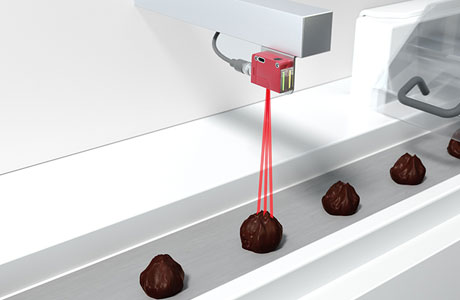Key Takeaway
A photoelectric light curtain is a safety device made up of multiple photoelectric beams. It creates an invisible barrier that detects objects or people entering the guarded area. When something breaks the beam, the machine stops immediately, preventing accidents.
These light curtains are commonly used in industrial settings to enhance machine safety. They are ideal for protecting workers from hazardous areas around machinery, such as presses or automated systems. The key benefit is their ability to stop a machine quickly when safety is compromised.
Introduction to Photoelectric Light Curtains: What Are They?
Photoelectric light curtains are advanced safety devices designed to protect people working around hazardous machinery. They create an invisible barrier using beams of light, detecting any object or person that interrupts the beam. When the beam is broken, it signals the machine to stop immediately, preventing potential accidents. These curtains are essential in industries where machines operate at high speeds or involve dangerous components, like robotics or presses. Unlike traditional safety guards, photoelectric light curtains don’t physically block access but provide a more flexible and responsive layer of protection.
Why are they called “light curtains”? Imagine a virtual wall made entirely of light beams—any object passing through instantly triggers a response. They are highly reliable, quick to install, and ideal for safeguarding operators without hindering workflow.

Key Applications of Light Curtains in Safety Systems
In industrial environments, the importance of safety cannot be overstated, and light curtains are central to this. Their primary role is in automation, where moving machinery poses a serious risk to workers. For instance, in assembly lines or robotic operations, photoelectric light curtains form a protective barrier. If an operator crosses the beam, the machinery halts immediately. This ensures the operator’s safety without hindering workflow. Packaging and printing industries also leverage this technology, especially in high-speed operations where precision and safety are critical.
Another key application is in press machines. These devices are used for metal forming and cutting, where the slightest mistake can lead to catastrophic injuries. Light curtains provide an immediate shutdown when an intrusion is detected, acting as a reliable safety net. From automotive to pharmaceutical industries, light curtains are versatile solutions that enhance safety without sacrificing productivity, ensuring worker safety remains uncompromised.
How Light Curtains Enhance Machine Safety in Industrial Settings
Light curtains revolutionize safety by integrating seamlessly with industrial systems. Unlike traditional guards or physical barriers that slow down operations, light curtains create a virtual safety zone. This technology allows machines to operate freely while ensuring human safety, making them invaluable in settings where operators need quick access to machinery. The non-intrusive design of light curtains boosts productivity without compromising on safety, making them a preferred choice in modern industrial setups.
Moreover, light curtains enhance peace of mind. With fewer accidents and production delays, these systems contribute to a smoother workflow. They can be integrated with safety controllers to meet specific safety requirements, providing tailored protection for each machine. In a rapidly evolving industrial landscape, adopting such advanced safety systems ensures that both worker safety and productivity are maintained efficiently.
Differences Between Standard Sensors and Photoelectric Light Curtains
While standard sensors and photoelectric light curtains may seem similar, their purposes are distinct. Standard sensors, such as proximity or photoelectric sensors, are used primarily for detecting objects—identifying their presence or absence. They are instrumental in ensuring proper alignment and process control but are not designed for safety purposes. For example, a proximity sensor might detect whether an object is in range but won’t stop a machine from operating if an operator is at risk.
In contrast, light curtains are specifically designed for human safety. They form a dense grid of beams, and if any beam is interrupted, the machinery is immediately halted. The purpose of light curtains is to protect workers by stopping dangerous equipment when needed, whereas standard sensors focus on operational control, not safety. This distinction makes light curtains essential in hazardous environments where human safety is a top priority.
Best Practices for Installing and Maintaining Light Curtains
Installing and maintaining light curtains is vital for their effective performance. Proper placement is critical—light curtains must be positioned at key entry points, such as around hazardous zones or moving machinery. Ensuring the grid of beams is dense enough to detect even small objects is equally important. Operators should also be trained to interact with the system, understanding how to avoid unnecessary interruptions that could affect productivity.
Maintenance is another crucial factor. Dust, dirt, or debris can obstruct the beams, potentially causing false triggers or undetected breaches. Routine cleaning and periodic testing ensure that the light curtains remain functional and reliable. It’s essential to follow manufacturer guidelines for both installation and maintenance, as each system may have specific requirements that need to be addressed to keep operations smooth and safe.
Conclusion
In today’s fast-paced industrial environments, safety can never be compromised. Photoelectric light curtains offer a cutting-edge solution that combines both safety and efficiency. Their ability to stop machinery instantly upon detecting any intrusion makes them indispensable in safeguarding workers while keeping production flowing smoothly. As industries continue to advance, investing in robust safety measures like light curtains is not just a regulatory requirement but a proactive step towards creating a safer and more productive workplace. Whether you’re dealing with automated machinery or manual operations, photoelectric light curtains ensure that safety is never left to chance.
